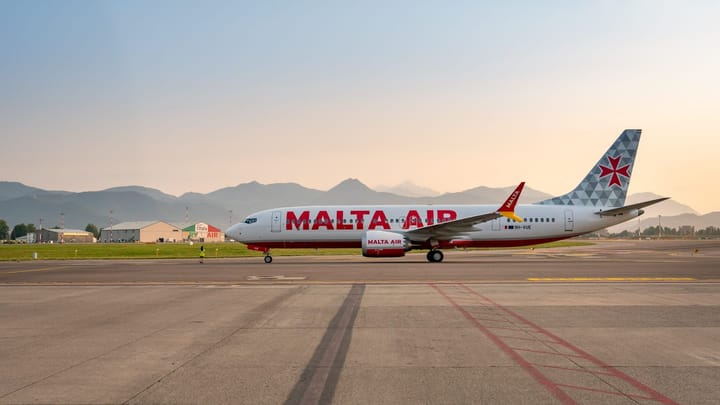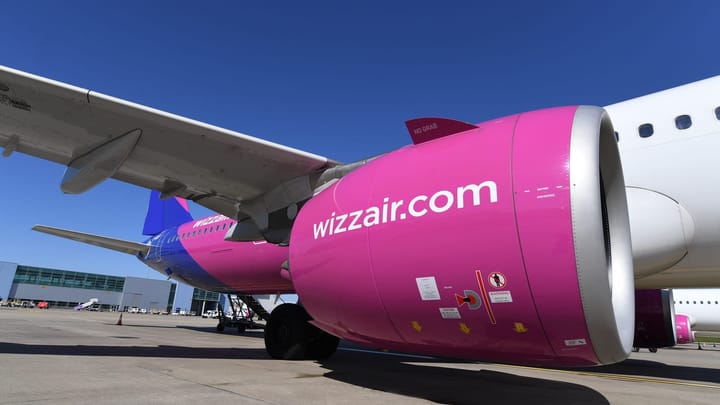So, where is Ryanair actually planning to grow this winter?
Despite the public perception, Ryanair is going to actually grow its capacity slightly this winter season.

As Ryanair continues its ‘Airport Charges Are Too High’ tour across Europe, including its latest stop in Germany, having already visited Spain and the Baltic States, announcing no growth or capacity withdrawals, it has to grow somewhere.
After all, the Irish low-cost carrier with subsidiaries in Malta, Poland, and the United Kingdom (UK), has taken delivery of a whopping 15 Boeing 737 MAX 8-200 aircraft between September 22 and October 14, retiring zero 737-800s during the same timeframe, according to planespotters.net.
In basic terms, Ryanair will enter this winter 2025/2026 season with at least 615 737, including a sole 737-700, and 26 Airbus A320ceo aircraft, compared to 574 aircraft it had on December 31, 2024.
The actual International Air Transport Association (IATA) winter 2025/2026 season will begin on October 26, 2025, and end on March 28, 2026.
Cirium’s Diio Mi showed that the Irish low-cost carrier and its European subsidiaries do plan to grow during the upcoming winter seasons, despite threats expressed in Spain, Rome, Italy, the Baltic States, and now, Germany.
Previously, concerned about the future availability of the low-cost Terminal 1 at Tel Aviv Ben Gurion International Airport (TLV), Ryanair said that it would not return to the airport during the upcoming winter season.

Ryanair’s biggest gripe has been airport charges or local taxes, with the airline saying that either it will not grow or will reduce its traffic at specific airports and/or regions due to rising costs. In some cases, such as Spain, charges rose by as little as €0.68 ($0.79), while at other airports, including in the Baltic States, airport charges have not risen in 2025 and are not going to increase for at least one or two years.

Between October 1, 2025, and March 31, 2026, Ryanair’s overall capacity, measured in available seat kilometers (ASKs), is scheduled to grow by 6% year-on-year (YoY). Departing flights from Africa (Morocco and Western Sahara), Europe, and the Middle East (Jordan and Turkey) should grow by 4.6%, according to Cirium’s Diio Mi.
Departing flights are scheduled to contract in nine countries: Denmark, Estonia, France, Germany, Israel, Latvia, Montenegro, the Netherlands, and Spain, with reductions ranging from 1.35% (the Netherlands) to 41.7% (Estonia).
(In Israel, flights from/to TLV are scheduled to begin on March 29, 2026, with 13 flights before the end of the month, which is why the capacity difference is not 100%.)
In the other 29 countries where Ryanair has scheduled flights, its capacity is scheduled to grow. The only exception is Albania, where departing flights and seats should increase, yet ASKs should be down 1.6% YoY.
Airport-wise, Ryanair is planning its largest schedule increases at Dublin Airport (DUB), Kraków John Paul II International Airport (KRK), Luqa Malta International Airport (MLA), Milan Malpensa Airport (MXP), Budapest Ferenc Liszt International Airport (BUD), Brussels South Charleroi Airport (CRL), and Alicante-Elche Miguel Hernández Airport (ALC).
And yes, Alicante is a Spanish airport. Seemingly, the additional charges set by Aena, the Spanish company managing the country’s airports, with the Spanish government owning a majority stake, did not deter Ryanair from growing at some Spanish airports.
Nevertheless, the seven aforementioned airports will have at least 1,000 additional flights during the six-month period. On the other end of the spectrum, Ryanair has not scheduled any flights from 11 airports that it flew from between October 2024 and March 2025, including Billund Airport (BLL).
Ryanair announced the closure of its BLL base in January 2025, citing the Danish government’s “short-sighted decision to introduce an aviation tax of up to DKK 50 [$7.81 – ed. note] per departing passenger from Jan 2025, coupled with Billund’s failure to agree a competitive long-term agreement.”
The base was wound down in March 2025.
Another airport with massive cuts compared to the winter 2024/2025 season is Santiago-Rosalía de Castro Airport (SCQ), one of the Spanish regional airports that was affected by Ryanair’s capacity cuts due to what it saw as “monopoly fee increases.” The airport will lose up to 1,200 departing flights between October 2025 and March 2025.
The low-cost carrier also said that the capacity cuts across Spanish Regional airports were due to “illegal fines.” In November 2024, the Spanish government, following an investigation by the Spanish Ministry of Social Rights, Consumer Affairs, and 2030 Agenda, fined easyJet, Norwegian, Ryanair, Volotea, and Vueling for, in the most basic terms, ancillary revenue practices.
Ryanair received the steepest fine, €107.7 million ($125.6 million).








Comments ()